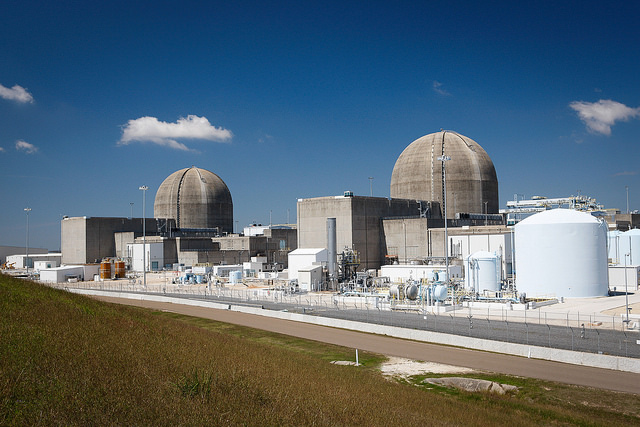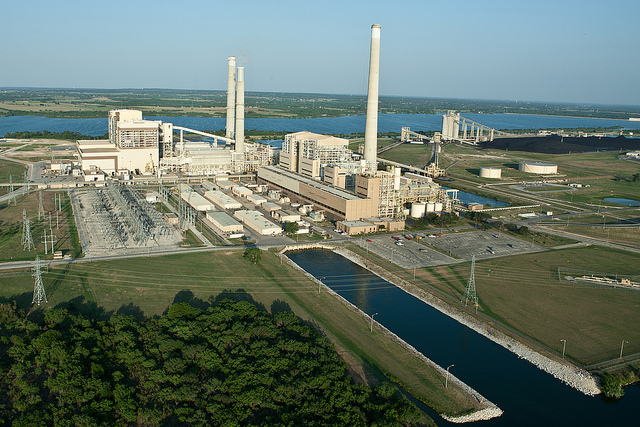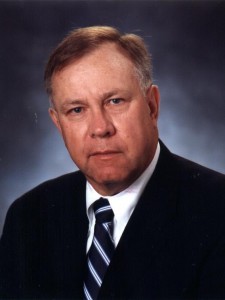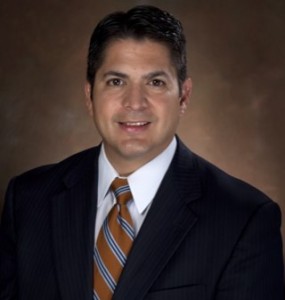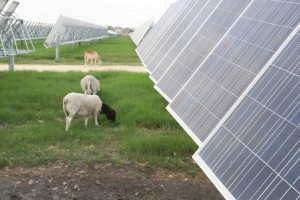San Antonio electric utility CPS Energy well positioned to comply with Clean Power Plan
CPS Energy charges residential rate of $.105/kwh, slightly under Texas average
As Texas electric utilities prepare to comply with the Clean Power Plan, one company is ahead of the pack. CPS Energy says it began moving away from coal eight years ago and anticipates no difficulty complying with the tough new regulations.
CEO Doyle Beneby argues – contrary to almost every other Texas politician and pundit – that the Environmental Protection Agency got it right.
“In the last few years, we’ve taken the approach that reducing pollutants in the air is the right thing to do,” said CEO Doyle Beneby. “The new rules proposed by the EPA strike a balance between where the utility industry is today and where we need to go.”
President Barack Obama’s climate change agenda is, first and foremost, a war on coal. Coal-fired power plants make up 24 per cent of Texas power generation (natural gas is 56%, other renewables is 13%, and nuclear is 8%). Low natural gas prices created by the shale revolution started the trend toward natural gas a decade ago and CPS Energy quickly jumped on the bandwagon, says Rudy Garza, VP of external relations.
“CPS Energy really has moved in the direction of a lower carbon generation fleet for quite some time now,” Garza, said in an interview.
“We made decisions back in 2009 to really move down a diversified generation portfolio strategy. We could achieve anywhere from 25 to 30 per cent carbon reductions just based on our current strategy. So, I think the natural evolution of the utility industry is a lower carbon future.”
That view is backed up by US Energy Information Administration studies which show that under various Clean Power Plan scenarios, natural gas power generation will grow faster than wind and solar until at least 2030, after which renewables will account for a larger percentage of new generation supply, while coal-fired generation will dwindle.
Switching to natural gas will present some minor problems, says
John Fainter, CEO of the Association of Electric Companies of Texas. For instance, while the state has plenty of natural gas production, the distribution network needs to be expanded.
“With the supply of gas that we have, we’re in good shape,” he said in an interview. “The infrastructure for the delivery of gas isn’t as good and it’s going to take time to develop that.”
CPS Energy is owned by the City of San Antonio and serves over 741,000 electricity customers and 331,000 natural gas customers. The utility’s fuel generation mix is nuclear power (35%), coal (34%), renewable energy (16%), and natural gas (15%).
Garza says if there is one thing the utility wish the EPA had done differently it is to include nuclear.
“We own a little over 1,000 megawatts capacity as 40 per cent owners of the South Texas Project,” he said. “Nuclear was removed altogether from the equation [by the EPA] and that is an abundant resource that has zero emissions and we’d like to see more credit for nuclear. The Clean Power Plan doesn’t incent new nuclear development.”
Still, Garza says, the Clean Power Plan is “fairly consistent” with CPS Energy’s goals.
One of Beneby’s first decisions when the took over the helm of the utility in 2010 was to retired the two oldest coal plants by 2018, well ahead of schedule. The utility bought an 800-MW combined-cycle natural gas plant the JT Deely capacity and signed a power purchase agreement for 400-MW of solar power.
The move away from coal to more natural gas and wind/solar isn’t expected to affect CPS energy’s prices, says Garza. According to the EIA, in June the average Texas residential rate was $.1186/kwh (commercial was $.079 and industrial was $.0551), while CPS Energy’s price was about $.105/kwh.
Despite the hype around solar, Garza doesn’t expect it to play a big role in CPS Energy’s future even though he acknowledges solar PV costs are dropping rapidly.
“I think we will see the day where solar will be as competitive as wind. I think it will be hard to get [solar] as low as coal. But I certainly think it can get into the natural gas and wind range,” he said.
CPS Energy has partnered with local San Antonio companies manufacturing solar panels and building tracking systems, for instance, that should help bring down solar prices in the long-term. Garza expects solar to play a bigger role in CPS Energy’s fuel mix, but thinks it will likely remain a “marginal fuel” barring significant technical breakthroughs.
One thing Garza is adamant about is that Texas, not the EPA, prepare the state compliance strategy for the Clean Power Plan, which requires states to submit by 2018. If they don’t, The EPA will impose its own plan, instead. Texas has announced plans to sue the EPA, which could delay the State’s response.
“If you look at what we’ve done compared to other utilities, the state can benefit up front on some of our decisions by allowing other utilities that may need to run coal a little longer, to retire those assets in a financially sound manner, maybe you can put those on the back end of the compliance plan,” he said.

